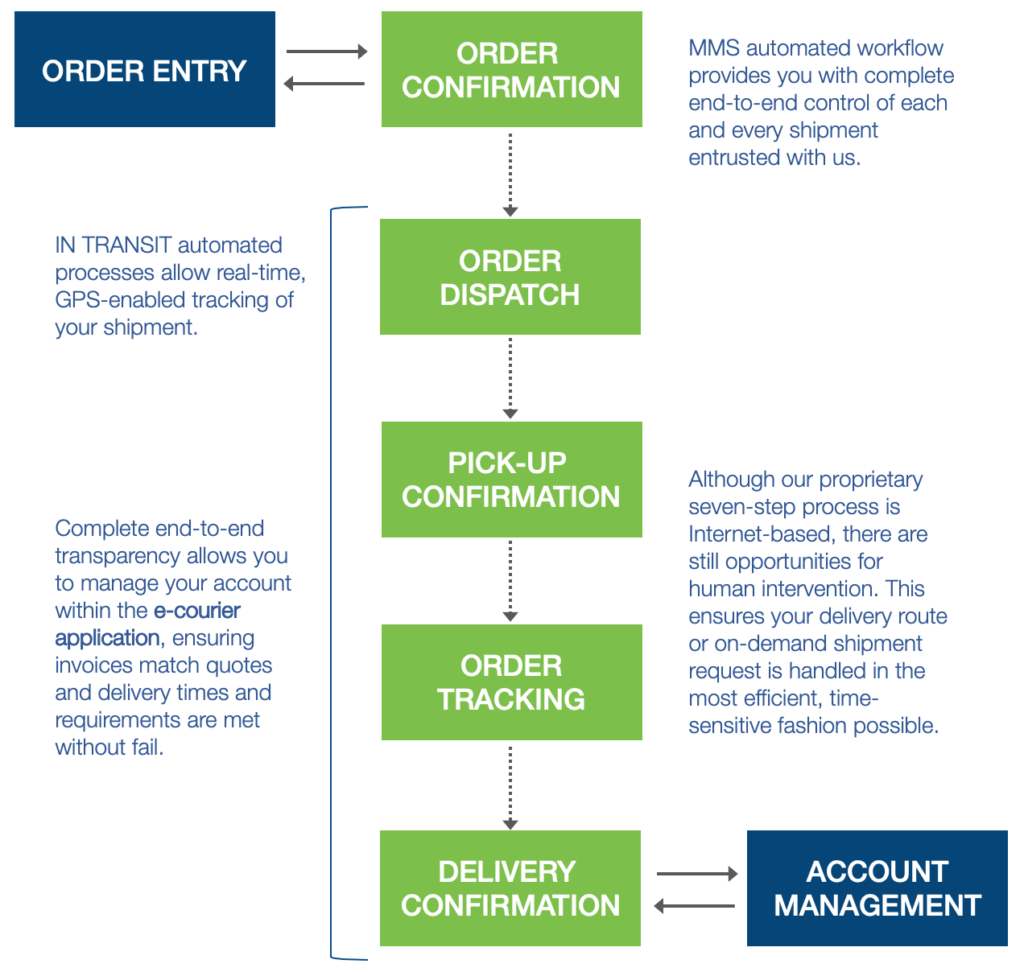
“Better three hours too soon than a minute too late.” ― William Shakespeare
W. Edwards Deming — long considered the originator of Total Quality Management (TQM) movement that spawned Six Sigma, LEAN and other best business practices, often lectured on the futility of being late for an on-time train. Whether you are one minute or one hour late does not matter. The result is the same.
In many instances, your courier and messenger activities involve similar pressures. Especially urgent, mission-critical on-demand requests. Yet even long-established daily routes and sweeps require single-minded focus on on-time pick-ups and deliveries. This post examines on-time delivery (OTD) and its impact and efficacy on your overall messenger and courier program and how you can utilize OTD metrics in continually improving service levels.
The importance of OTD
On time delivery improves collaboration with your customers — both internal and external —and increases customer loyalty based on the reliability, trust, and confidence consistent OTD instills. E-commerce giants like Amazon, Walmart, eBay, Home Depot, Target, Microsoft, and many others are changing consumer expectations relative to agile, accessible, and accurate ordering and delivery of products and services. So, it’s vital those expectations are managed properly no matter if your messengers are delivering documents, medical supplies, lab test results, or prescriptions.
 Portland-based MMS Courier developed a seven-step process for streamlining, monitoring, and reporting on courier performance. In doing so, the firm provides clients with the necessary tools to control every phase of the process — from order entry to budgeting and planning. More importantly, though the framework is technology driven, MMS incorporates the means for human intervention every step of the way, ensuring OTD remains in focus from start to finish. As a result, MMS clients consistently experience OTD rates of better than over 96%.
Portland-based MMS Courier developed a seven-step process for streamlining, monitoring, and reporting on courier performance. In doing so, the firm provides clients with the necessary tools to control every phase of the process — from order entry to budgeting and planning. More importantly, though the framework is technology driven, MMS incorporates the means for human intervention every step of the way, ensuring OTD remains in focus from start to finish. As a result, MMS clients consistently experience OTD rates of better than over 96%.
Understand Your Team’s Role in Optimizing OTD
There are many Key Performance Indicators (KPIs) used for measuring various aspects of your business operations. And they differ across industries and functions. So, as the manager responsible for courier and messenger activity, focusing your time and energy on the most impactful KPI is paramount.
OTD is the one metric that will yield the greatest results. By understanding when, how, and why service breakdowns occur, you vest your organization with a significant competitive advantage in delivering on customer promises. That means tracking late pick-ups and deliveries and identifying the root cause associated with each instance.
You will also want to distinguish between common and special causes. Common causes are OTD failures under your control. Special causes are unavoidable anomalies that no matter how tight your processes and procedures are, would have occurred anyway. Naturally, minimizing and striving toward eliminating common causes of late deliveries is essential.
Once you recognize the causes for late deliveries work closely with your messenger and courier partner and any inter-department stakeholders within your organization in developing a plan-of-action for addressing service failures. Implement the plan and commit to it. Lack of team participation and commitment is the number reason initiatives fail. So, make sure each team member and associated department understands what you are doing and why. Communication is vital. Monitor the results and make adjustments and alterations based on your findings.
Transform Your Organization
Of course, contrary to the wisdom cited above from William Shakespeare when it comes to organization performance an early arrival — whether pick-up or delivery — can pose as many service issues as being late. Naturally, the challenges associated with being late are evident and tend to create greater disruption. But the impact of being early, despite not being as obvious, lead to waste and service issues with the capacity of creating a ripple effect of problems throughout the entire system.
Hence, the key takeaway is that by focusing on OTD — both late and early — you establish an operating system whereby pick-ups and deliveries are predictable and require little or no special human intervention. Of course, that means your scheduled routes must be carefully constructed around channel partner, customer, and vendor requirements as well. Doing so makes unplanned, urgent on-demand requests much less unpredictable and disruptive.
The end result is a culture defined by people, process, and technology working in ideal harmony. And when things do go wrong, rather than pointing fingers and assigning blame, the system makes ready identification and resolution of the problem a routine matter. Stress is alleviated, customers are delighted, and value chain partners are content.
# # #
